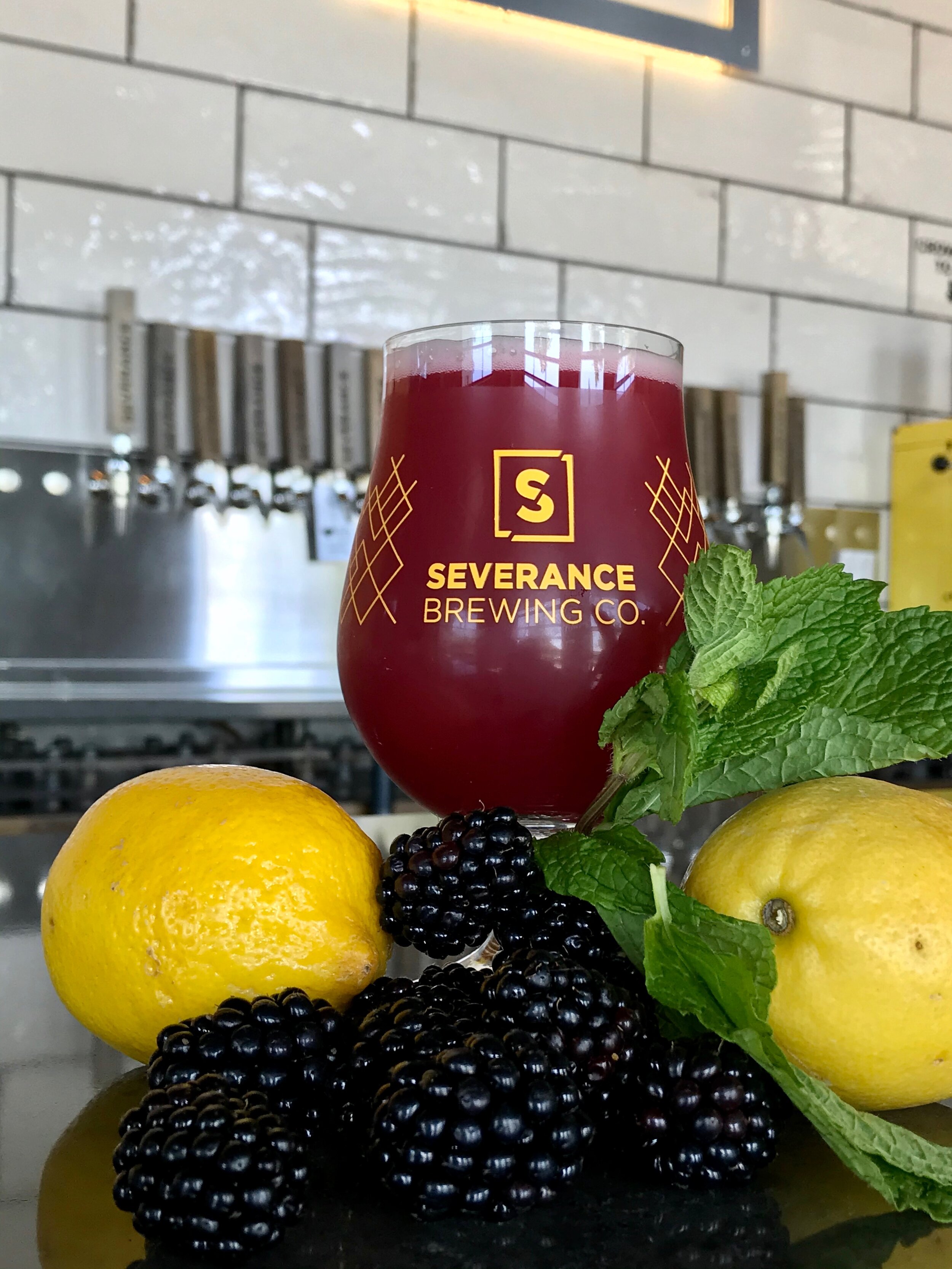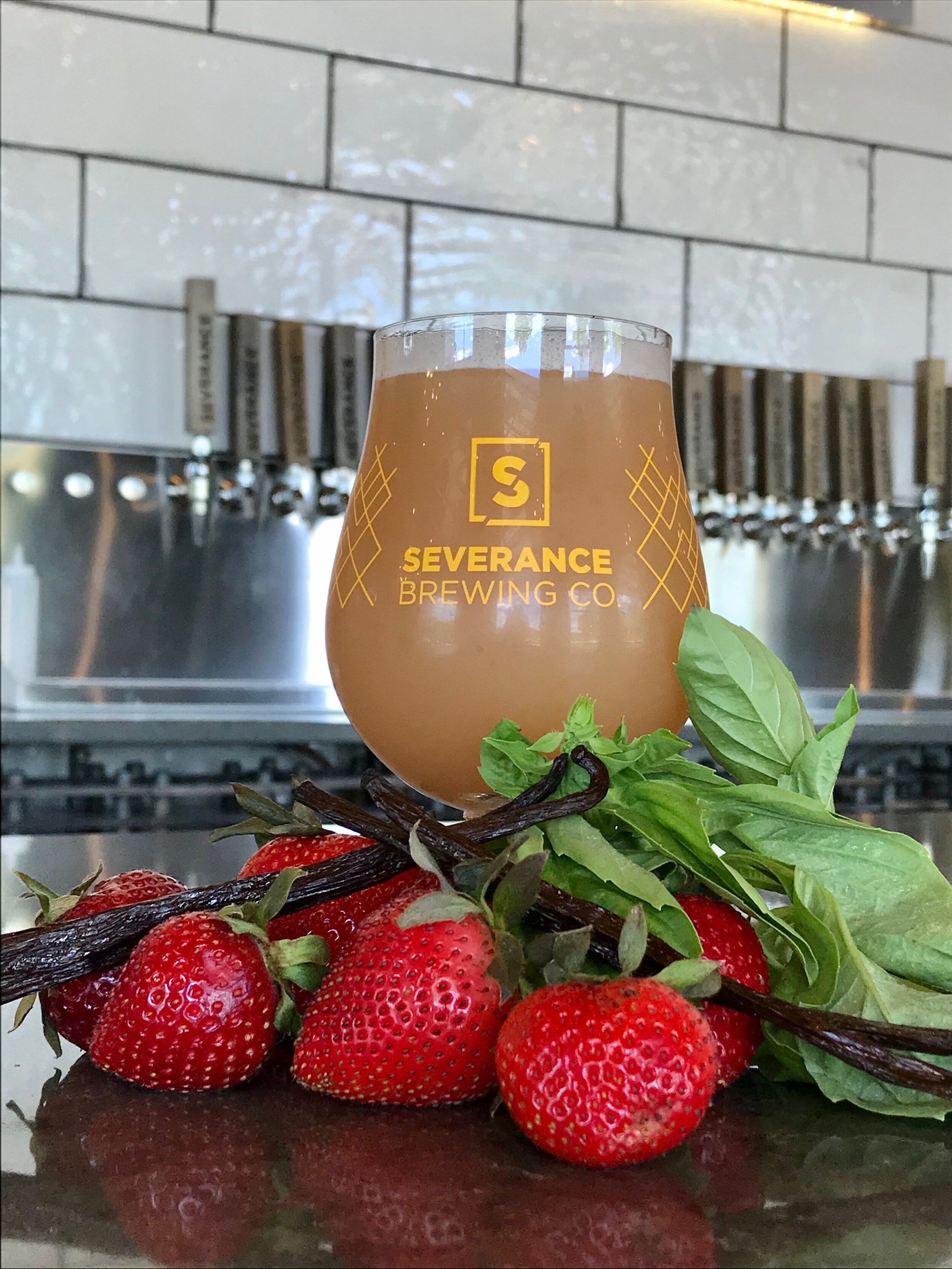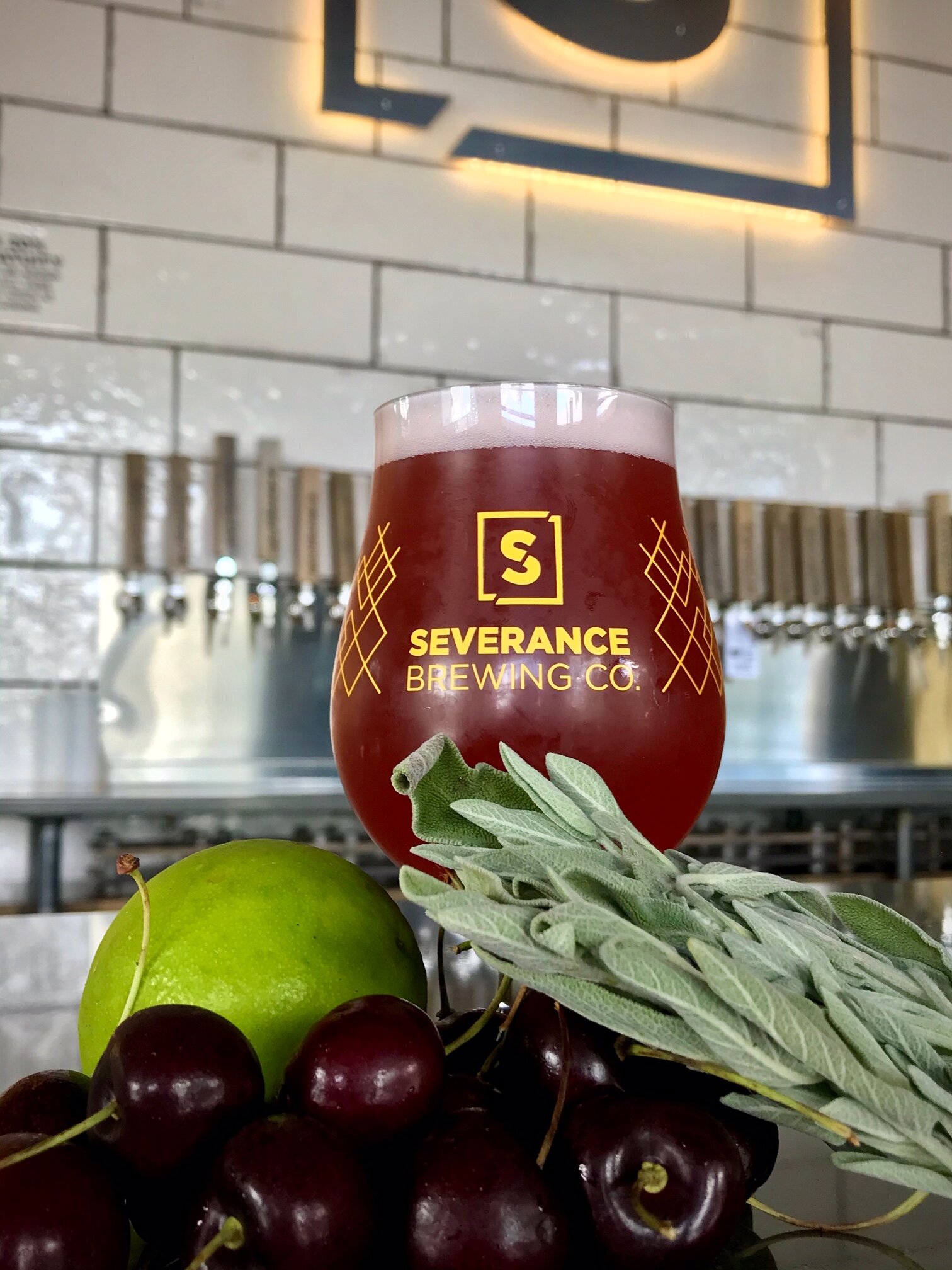By Scott Heckel | CEO + Head Brewer | Severance Brewing Co.
Fruited sour beers are all the rage! At Severance Brewing Co. we’ve seen a lot of interest in Ambidextrous Hitchhiker, our kettle sour with rotating fruit additions as well as our Summer Herbification Project beers released earlier this summer. But, what makes a “sour beer” sour?
Sours are typically categorized as wild/mixed fermentation and kettle sours. While kettle sours are more easily controlled and quicker to produce, mixed/wild fermentations tend to produce more interesting flavor profiles.
Wild/mixed fermentation sours have been around for centuries with common examples including Flanders Red, Lambics and Gueze. They gain their tart character through their yeast - whether it be found in nature or through more controlled yeast cultures such as Brettanomyces bruxellensis - which produce various acids as they consume all available sugars over a long period of time. Most production breweries stray from these beers due to risk of cross contamination of standard ales and lagers in their brewery. However, our local friends over at Covert Artisan Ales specialize in this type of fermentation.
Kettle sours are what many breweries, including Severance, brew. A kettle sour gets its name because we sour the wort (sugar water from grain) in the brew kettle using a bacteria known as Lactobacillus. After creating the wort using a standard mash and transferring to the brew kettle, we cool the wort to approximately 95F and pitch the Lacto. We then let it sit overnight while the Lacto creates lactic acid, causing the beer to sour. Once we reach the desired level of acidity, we start the boil which kills the Lacto and we can then treat the beer just like any other we brew without the risk of contamination. This process allows us to produce a sour beer in a matter of weeks rather than months or even years.





